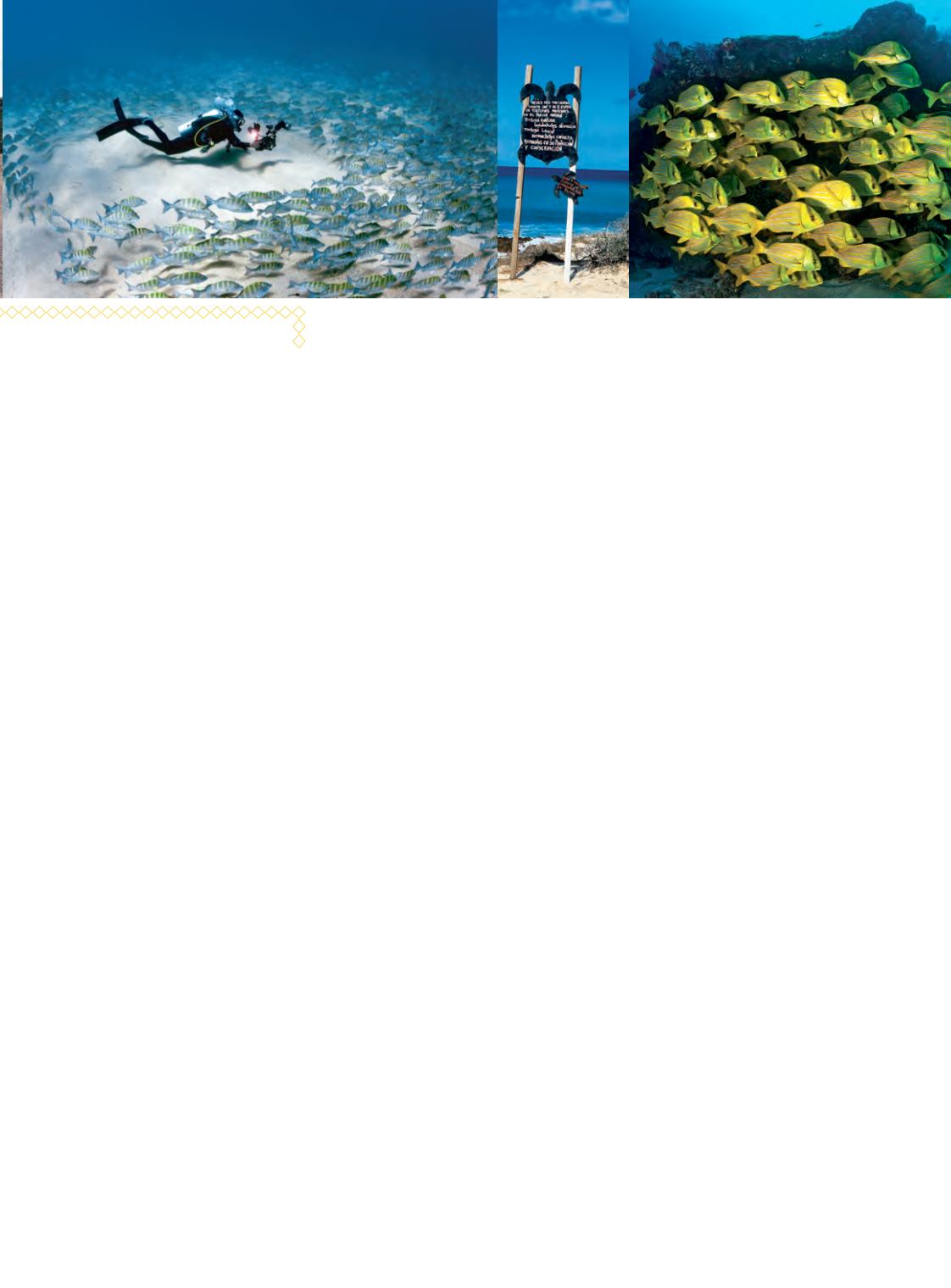
and that could have destroyed the reef with sediment
runoff and other polluntants. With support from other
Mexican and international environmental groups,
they won their battle when former President Felipe
Calderon cancelled the resort’s permits in June 2012.
Still, other developments are being planned for the
relatively isolated East Cape area between the city
of La Paz and the sprawling tourist nexus of Cabo
San Lucas with its shopping malls, high-rise hotels
and sportfishing marinas. Recognizing that some
development is inevitable, ACCP is working on a
strategic plan with other cape communities and urban
planners for a sustainable future. Their vision and
goals include providing fresh water, sanitation and
other public services for Cabo Pulmo, creating an
urban plan in keeping with their existing low-impact
way of life and promoting ecotourism that provides
locally based jobs. They also want to strengthen
protection for the marine park, recognizing that good
stewardship is key to their future.
Ecotourism dollars already have helped open a
learning center for the town’s kids. A big wall mural
shows three mermaid girls studying while a sea turtle
brings them more books on its back. On my visit I saw
an older American couple rehearsing a group of 18
youngsters for a “symphony” performance of a cappella
voices and percussion instruments.
Globally, no-take marine protected areas (MPAs)
such as Cabo Pulmo — particularly those created from
bottom-up seaweed groups (marine grassroots) of
fishermen and community activists — have proven the
resiliency and popularity of ocean restoration. After
all, it’s doesn’t take a rocket scientist to understand
that if you stop killing fish they tend to grow back.
A study by the Scripps Institution of Oceanography
found the Cabo Pulmo reserve has been especially
resilient, showing an astonishing 463 percent increase
in its biomass (more and bigger fish) between 1999
and 2009. Yet, despite new and expanded marine
wilderness parks — what ocean explorer Sylvia Earle
calls “Hope Spots” (see the Spring 2013 issue of Alert
Diver) — in the Western Pacific, California and
Costa Rica, and campaigns to protect both Arctic
and Antarctic waters, almost 2 percent of the world’s
ocean area today is protected from fishing, drilling and
dumping. Scientists have suggested that to provide a
biological reserve for the future of our blue planet we
should protect 20 percent of the ocean.
On my last dive at Cabo Pulmo, David Castro leads
a father-son team and me to the wreck of an old tuna
boat, 50 feet down. Sunk during a storm in 1939, the
pilothouse and hull have become abstract structures
covered in corals, green anemones and a few dazzling
nudibranchs along with the usual litter of grunts,
snapper and jacks. We swim away onto the sand flats,
where David spots three big bull sharks. One, about
8 feet long with the girth of a fighter jet’s fuel tank,
swims in and out of view, cruising past me with little
apparent interest in a bipedal bubble blower. A few
minutes later I spot another big fella — or maybe it’s
the same one; it’s hard to tell in the limited visibility.
If someone were to ask why we were swimming
through murky waters looking for big sharks, I’d say
it was for the same reason you hope to see a grizzly
bear when you visit Alaska: One, they’re magnificent
animals, totally adapted to their environment, and
two, to paraphrase author and naturalist Ed Abbey, “If
there’s not something bigger and meaner than you out
there it’s not really wilderness.” While we’ve learned
how badly we can trash our ocean planet, it’s good to
be reminded we can also restore it. Cabo Pulmo’s once
overfished and depleted waters today are a wilderness
and a wonder.
AD
David Helvarg is an author and executive director of
Blue Frontier, a marine conservation group. His new
book is The Golden Shore: California’s Love Affair
with the Sea.
|
85
From left: Golden grouper, tubastrea corals and fry; a large hand-painted cutout of a whale
shark greets visitors to Cabo Pulmo; diver and grunts; several species of sea turtle nest in the
park; schooling porkfish
PHOTOS THIS PAGE: KIP EVANS


